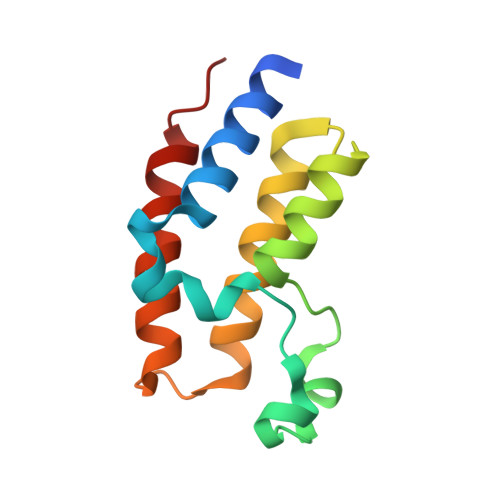Phenyl-Glutarimides: Alternative Cereblon Binders for the Design of PROTACs.
Min, J., Mayasundari, A., Keramatnia, F., Jonchere, B., Yang, S.W., Jarusiewicz, J., Actis, M., Das, S., Young, B., Slavish, J., Yang, L., Li, Y., Fu, X., Garrett, S.H., Yun, M.K., Li, Z., Nithianantham, S., Chai, S., Chen, T., Shelat, A., Lee, R.E., Nishiguchi, G., White, S.W., Roussel, M.F., Potts, P.R., Fischer, M., Rankovic, Z.(2021) Angew Chem Int Ed Engl 60: 26663-26670
- PubMed: 34614283
- DOI: https://doi.org/10.1002/anie.202108848
- Primary Citation of Related Structures:
6WWB - PubMed Abstract:
Targeting cereblon (CRBN) is currently one of the most frequently reported proteolysis-targeting chimera (PROTAC) approaches, owing to favorable drug-like properties of CRBN ligands, immunomodulatory imide drugs (IMiDs). However, IMiDs are known to be inherently unstable, readily undergoing hydrolysis in body fluids. Here we show that IMiDs and IMiD-based PROTACs rapidly hydrolyze in commonly utilized cell media, which significantly affects their cell efficacy. We designed novel CRBN binders, phenyl glutarimide (PG) analogues, and showed that they retained affinity for CRBN with high ligand efficiency (LE >0.48) and displayed improved chemical stability. Our efforts led to the discovery of PG PROTAC 4 c (SJ995973), a uniquely potent degrader of bromodomain and extra-terminal (BET) proteins that inhibited the viability of human acute myeloid leukemia MV4-11 cells at low picomolar concentrations (IC 50 =3 pM; BRD4 DC 50 =0.87 nM). These findings strongly support the utility of PG derivatives in the design of CRBN-directed PROTACs.
Organizational Affiliation:
Department of Chemical Biology and Therapeutics, St. Jude Children's Research Hospital, Memphis, TN, 38105, USA.
















